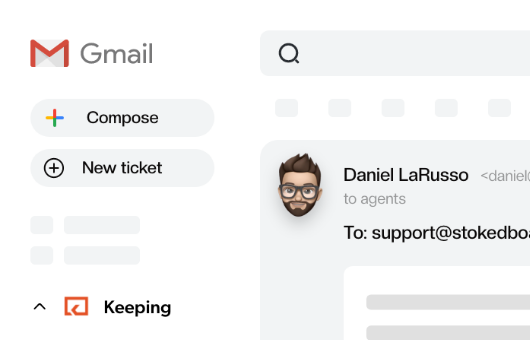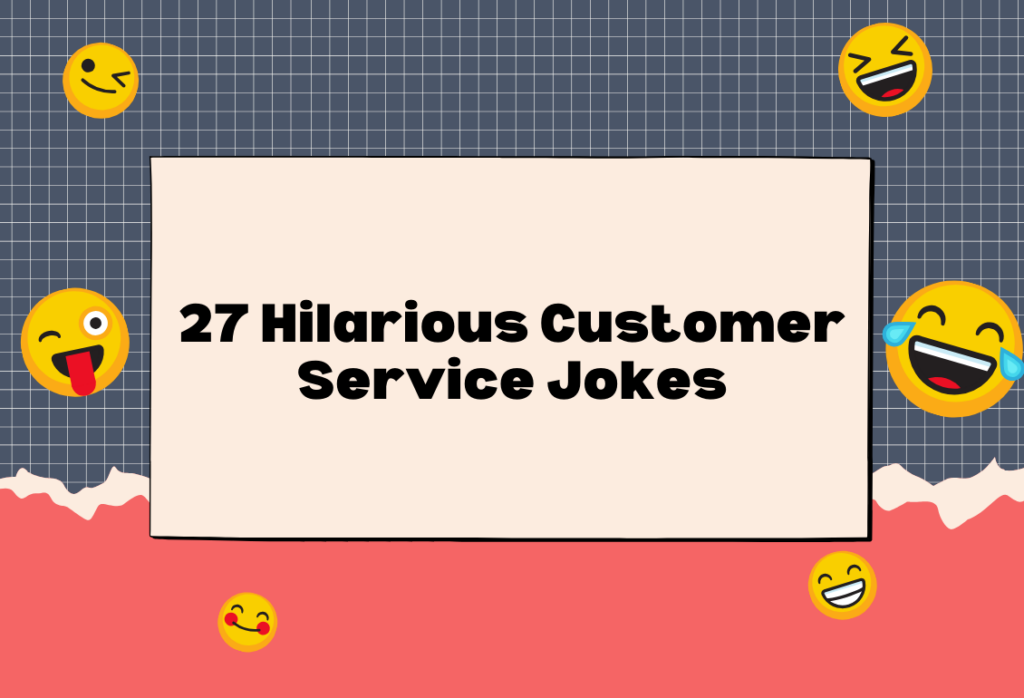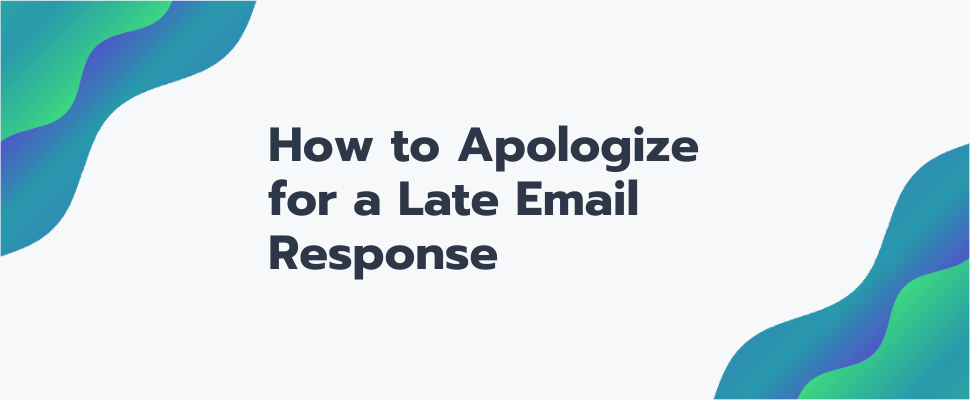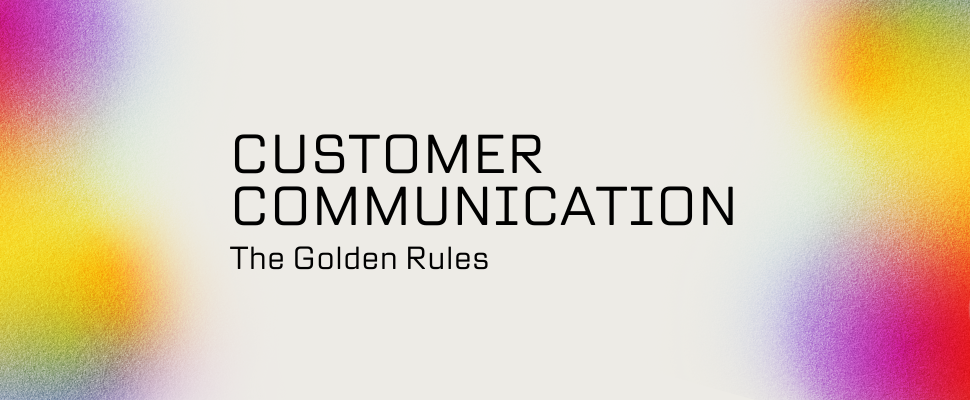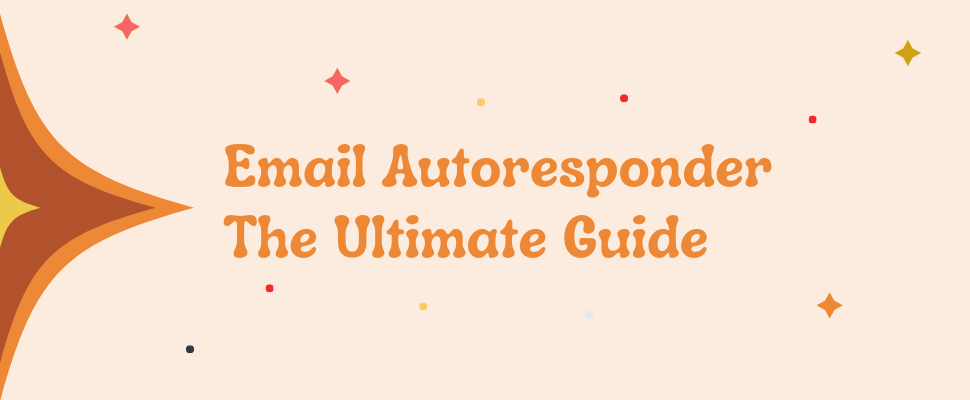
The Email Autoresponder Guide
Using the right email autoresponder software can help prevent emails from ending up in your junk folder. Emails should look like they come from a trusted source to encourage customers to open them. If used properly, email autoresponders can positively affect customer engagement rates and customer success.
If your business has any customers at all, then you will be deeply interested in communicating with those customers throughout their journey with you. If customers don’t receive responses from you, they may think your business is ignoring them or their actions have been unsuccessful.
You don’t want to manually send every communication you have to have with your customer – if only there were a way to automate emails when customers complete, or don’t complete, certain actions. Luckily, you can take advantage of email autoresponders to keep the lines of communication open with your customers and ensure they know your business cares about them.
Your business will want to take charge of engaging with customers through email autoresponders if you haven’t already.
While sending too many autoresponders to customers risks verging on spamming them, launching thoughtful automations can actually help customers feel more engaged and reduce the workload on your marketing and support teams.
What is an email autoresponder?
An email autoresponder is an automated email that is triggered by a customer taking a certain action such as adding an item to their shopping cart or emailing your support team. Autoresponders are sent to customers without the need for your internal teams to manually write the email and hit send every time.
Take the example of a customer signing up to your email list. You want to acknowledge their signup but you don’t want to personally email every single customer – setting up an autoresponder is a great way to let customers know they have successfully signed up and whether they need to take further action.
It needs to be clear to customers why they are being sent a certain autoresponder to avoid annoying them.
Autoresponders can be as simple or complex as you like, but it’s typical for businesses to use specialist marketing automation tools to set up and deliver their autoresponders. Autoresponders allow you to set up conditions for triggering your emails and offer reports that allow you to analyze performance.
What are the benefits of email autoresponders?
Email autoresponders are beneficial because businesses need to actively communicate with their customers at scale. A business can’t personally respond to every customer each time they purchase a product, or spend time nurturing every new sales lead with individual email sequences. When a type of email works well for the majority of customers, it can be automated to save time and effort.
If customers receive automated messages after they have completed an action, they know that action has been successful. And while autoresponders are clearly not from a real person, customers should know they always have the option to reach out to a human if they ever need help or want to learn more so they will turn into loyal customers.
Email autoresponders are opportunities to nurture better relationships with customers and connect with them regularly. Without autoresponders, you are likely to lose customers and revenue as customers turn to your competitors who can provide them with a better experience.
Email autoresponders support, rather than replace, the human touch, as you use them to keep customers in the loop.
In what situations should I use autoresponders?
You can use email autoresponders in many different situations, which include:
- When a customer purchases your product
- When a customer signs up to your email newsletter
- When a customer abandons their shopping cart
- After a customer has created a support ticket
- To let customers know when a new site is going live
- When a customer updates a setting on their account
- When a customer’s account is about to expire
- Prompt customers to leave a review
As you can see, you can use email autoresponders in all types of scenarios either to confirm the success of an action or to encourage further action, which are usually classed as transactional emails. When email autoresponders are triggered, it feels personal if they are tailored to give a customer a better experience.
The only time you should never use an autoresponder is when answering a customer support ticket. If a customer is sent a list of FAQs or a link to a knowledge base, this can make them more angry than happy when they were hoping to reach a human being who could help them.
Autoresponders aren’t simply a way to cut costs, but a means of streamlining your efforts so you can devote resources to what really matters – building better experiences for your customers. For example, you don’t want to send a marketing sequence to customers just after they have had a negative support experience. You need to be sensitive.
You should think about your autoresponders holistically so you have more control over how you present your brand to customers.
How do I create an autoresponder email?
Creating an email autoresponder is simple – write your content, apply a design with any relevant images and upload it to your autoresponder software, and A/B test different versions to find the best one that works for you.
An autoresponder email should be highly targeted and make it clear what action you want your customer to perform. It should be obvious that the email is from your business and is not from an unauthorized sender. Always obtain permission from your customers before you start sending them any kind of autoresponder email, and make it easy for them to update their preferences.
An autoresponder email can be created using your company’s brand voice, including humor if that’s in keeping with your usual style and relating to customers on a human level. You never have to pretend your emails aren’t automated, but they should be written in an accessible way that customers can easily understand.
Always get feedback on how your responder looks and feels to customers, as their interpretation of your content may be very different to your intention.
What is the best email autoresponder?
Many users agree that Constant Contact is one of the best email autoresponder tools on the market.
Constant Contact
Developed specifically with small businesses in mind, Constant Contact offers simple and complex email automation features that you can use to engage your customers. Though it has a range of features, you can take advantage of marketing automations to send the right autoresponder at the right time.
Features include:
- Send emails to customers on their birthday
- Contact customers who abandon their cart
- Acknowledge customers who sign up to your email list
- Map your own paths with customers to send the most appropriate messages
- Create sign-up forms to attract new customers to your list
- Create a series of emails based on particular conditions to nurture leads
Constant Contact even offers a 60-day trial period with no credit card details required, leaving your small business with the time it needs to successfully evaluate the tool. Top-notch support and an active community means you’ll never be stuck for ideas on how to use Constant Contact.
What is a good auto-reply message?
A good auto-reply message is one that engages customers without overwhelming them with information. The email is straightforward and customers automatically know what steps to take to further engage with your brand. Autoresponders should show customers that whatever action they have taken has been successful and assure them that they don’t need to do anything further.
Auto-replies don’t pretend to be anything other than what they are, since customers understand that automation is a normal way to communicate for businesses in many cases. If your business isn’t using autoresponders, then you are missing out on vital opportunities to connect with customers.
Autoresponders are a key part of the digital customer experience. Therefore, a good autoresponder is simple, direct and helpful, and customers know exactly why they have received it.
Autoresponders are necessary tools to convey important information that your business needs to impart to customers.
What are the top 5 autoresponders?
There are several more autoresponder solutions you can consider if you want to send emails to your customers, which are generally classed as marketing automation tools. These tools will help support your email marketing strategy and engage more customers.
Moosend
Moosend is a simple email marketing platform that allows you to benefit from email marketing and automation capabilities such as personalized content and customizable templates. You can A/B test your subject lines and segment your lists. Repetitive tasks can be turned into automated workflows, like prompting customers who have abandoned their carts. You have the ability to create beautiful landing pages that will convert your customers.
Brevo (Sendinblue)
Brevo is a platform that helps you build customer relationships through email marketing and other channels. It’s another solution that offers a range of features that also include marketing automation such as welcome emails for new subscribers or abandoned cart emails. Brevo is focused on engaging customers holistically through the channels that are most-used by them.
HubSpot
HubSpot offers a range of software that includes an email automation solution. The advantage of HubSpot is its integration with HubSpot’s other tools such as the form builder which can trigger a response every time a customer submits a form on your website. HubSpot can create automated email sequences of several autoresponder emails and also send emails based on certain behaviors.
GetResponse
GetResponse is another email marketing tool that allows you to send emails and automate communication. Emails can be triggered at a particular time or based on data and can be sent as a sequence. You can send out email marketing campaigns, welcome new signups, then move on to sending them a relevant offer and then promoting your products and services. The drag-and-drop editor helps you create beautiful emails that customers want to engage with.
Klaviyo
Klaviyo is a marketing automation platform for email that lets you send targeted, personalized messages. It provides advanced segmentation to allow you to focus on customers with particular traits, as well as automatically send messages based on particular behaviors. Klaviyo is good for ecommerce businesses that want to move customers through the funnel and engage with them at every touchpoint.
What is an example of an autoresponder email?
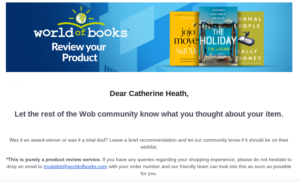
Here’s an example of an email autoresponder from World of Books asking customers to rate the products they have recently bought. Note that it is personalized, friendly, and completely clear what the company is asking you to do. Reviews help other customers to choose the products that will suit them, so Wob has chosen to actively solicit genuinely helpful reviews from customers. They’ve included an appealing image to help engage customers who open this email.
This autoresponder is sent a while after customers have received their order to ensure that they have had time to enjoy their products before leaving a review. Consider the customer’s needs and expectations when setting up your autoresponders to ensure you don’t risk annoying or confusing them.
Autoresponder best practices
Don’t send too many autoresponders
If you overwhelm customers with autoresponders, then your attempts to communicate become nothing more than white noise and they might even unsubscribe from you altogether. Only send an email autoresponder when you really need to, otherwise customers will ignore your carefully crafted automated messages and your efforts will go to waste. If a customer hears from you, they should know your message is timely and important.
Consider your customer’s perspective
The best type of email autoresponder considers your customer’s perspective above all else. If you’re updating customers that their subscription is about to expire, don’t be too pushy but simply provide a gentle reminder to renew. Customers appreciate it when you think about their feelings and build messages that are sure to resonate with them. Email automations should always put customer needs first.
Think about what action you want your customer to take
There’s nothing worse than a confusing email that leaves customers wondering what action to take after reading it. Make sure you include a clear call-to-action if your email requires some sort of response from the customer – for example, verifying their email after signing up to your email list. Don’t hide your call-to-action inside all sorts of waffle that customers can’t be bothered to read.
Make them visually appealing
Customers will engage more with your autoresponders if you make them visually appealing. The right autoresponder software will allow you to customize your emails with all sorts of designs and images that resonate more than text alone. Beautiful emails entice customers to click on them and remember the message you are sending. Emails that are on-brand are communicating with a single brand voice and are more comprehensible to the customer.
Make it clear why you’re sending the email
Always make it clear to customers why you are sending an email so they don’t get confused. Place this information in the first line of the email so customers don’t have to scroll through walls of text to find out what you want from them. Keep each email you send focused on one topic to avoid overwhelming customers with information. If your emails are targeted, this makes it more likely that customers will take in what you are trying to say.
Let customers know how they can reach a human
Email autoresponders are great because you can set them up once and they are sent automatically, but customers still need to know they can reach a human if they have questions. Including a contact link for support at the bottom of every autoresponder can be an effective way of encouraging customers to get in touch, rather than simply becoming dissatisfied and leaving your business.
Wrapping up
Email autoresponders engage and retain customers by communicating vital information. They can even drive revenue by sharing offers, upsells, and cross-sells, as well as informing customers about new products that have become available. Whatever you use your autoresponder for, make sure it’s all about the customer and creating a better experience.
It’s worth taking the time to test different email autoresponder templates to work out which ones achieve better results with customers. You may experiment with more or less text, placement of images, and different styles of copy to prompt customers to take action. You want to stop customers from ignoring your autoresponder emails at all costs.
When you use email autoresponders in the right way, customers are happier because your business is proactively communicating with them.
Using the right email autoresponder software can help prevent your emails from ending up in your junk folder. Emails should look like they are coming from a trusted source to encourage customers to open them. If used properly, email autoresponders can positively affect customer engagement rates and customer success.
Join 150+ teams that are sharing inboxes with us
The easiest way to upgrade your shared Gmail account. There’s no credit card is required.
